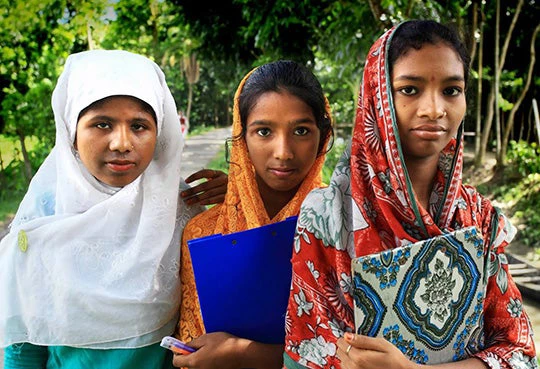
Mahfuzul Hasan Bhuiyan/World Bank
A number of incidents this year have highlighted the challenging circumstances in which girls attend school in developing countries. Nearly 300 adolescent school girls were abducted from their boarding school in northeastern Nigeria by the Boko Haram group. Frequent attacks on schools have forced many parents to withdraw girls from education.
Development practitioners and donors are more convinced than ever that increasing opportunities, skills and resources for women and girls will lead to measurable improvements across a wide range of development indicators for all people, irrespective of their gender. The running assumption is that supporting adolescent girls is one of the most effective strategies available to achieve wider developmental outcomes.
The World Bank’s report, Voice and Agency: Empowering women and girls for shared prosperity launched two weeks ago, highlighted the close relation between female education and child marriage, noting, in particular, that girls with no education were six times more likely to enter into a child marriage compared to girls with high school education in 18 of the 20 countries with the highest prevalence of child marriages. However, the case of Bangladesh shows that improvements in female education are not a sufficient condition for reducing child marriage among women: two out of every three girls marry before age 18 in spite of a big jump in secondary school enrollment and a sharp decline in fertility rate in the last twenty years.
An example of this effect is the World Bank’s female secondary school stipend scheme in Bangladesh , introduced in the 1990s to give girls incentives to stay in school longer. Its introduction made it normal and acceptable for girls in rural Bangladesh to attend secondary school, a practice that was previously widely frowned-upon in more conservative communities.
Since the programme began, female secondary school enrolment has risen dramatically in Bangladesh, achieving parity with the male enrolment rate . So far so good – and yet, Bangladesh remains one of the countries with the highest rates of child marriage in the world. While parents in rural Bangladesh are much more likely to send their adolescent daughters to school today than they were 20 years ago, a good marriage proposal can still bring an end to their schooling. The schooling norm has changed – but only to the extent that it does not conflict with the early marriage norm.
A recently completed survey of women in Bangladesh found that more than 60% of women between the ages 20 to 24 were married by age of 18 – little change from figures reported over the past 15 years. Nearly three out of every four who were married by 18 reported in the survey noted that parental pressure was the main reason for their early marriage.
The current thinking on child marriage does acknowledge the importance of socio-cultural and location specific factors contributing to the persistence of the practice around the world. However, as seen in the case of Bangladesh, traditional views of the role of women can continue to shape their life choices even when opportunities regarding education and employment are expanding rapidly.
The implication is that if we really want to improve the quality of life for adolescent girls in developing countries, we need a multi-pronged approach; we need programmes designed specifically to improve access to schooling, to discourage early marriage and childbearing, to help women develop income-generating skills, to improve security and safety in public spaces and workplaces and to prevent domestic violence. Programmes and policies that focus on just one of these goals at the neglect of others will fail to make a comprehensive difference in the lives of adolescent girls.



Join the Conversation